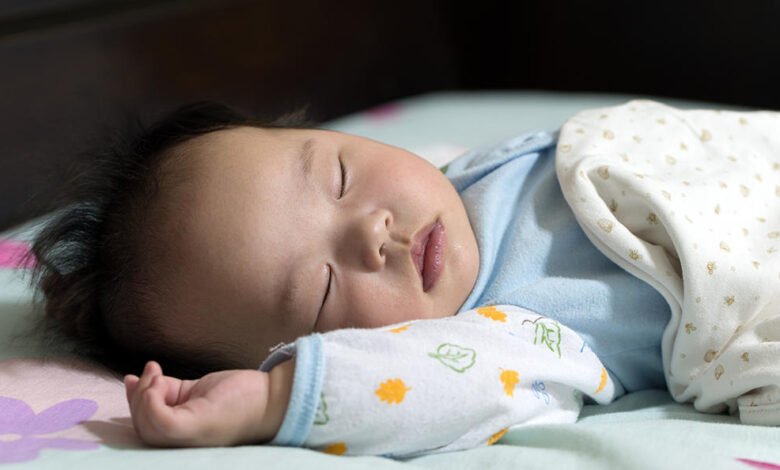Which Sleeping Position Is The Safest For A Baby?

Do you know which sleeping position is the safest for a baby? Babies snooze a lot. In fact, the American Academy of Pediatrics (AAP) recommends that a baby sleeps between 14 and 17 hours per day. Because of this, it is crucial for parents to set up a secure sleeping environment for their child.
In the United States, hundreds of infants pass away abruptly and unexpectedly each year. However, according to the AAP’s safe sleep recommendations can reduce the risk of a baby dying suddenly and unexpectedly (SUID). This phrase refers to fatalities of infants younger than a year old from undetermined causes, such as sudden infant death syndrome (SIDS), unintentional suffocation in a sleep setting, and other deaths.
Read More: How Time Change Affect Your Sleep
We respond to three frequently asked questions regarding reducing your baby’s risk of SIDS and other sleep-related deaths and protecting your infant while they snooze.
Where and how should my infant sleep?
- Baby sleep should be on the back. When it was discovered that putting babies to sleep on their backs could lower the incidence of SIDS, the phrase “back is best” became well-known in 1992. Keep in mind that your infant should always sleep on their back, even while taking naps.
- Babies should rest their heads on a flat, sturdy surface. To lessen the chance of suffocating in the event that the baby rolls over, it is crucial to choose a surface that is not inclined.
- Baby sleeping areas should be free of obstructions. Baby blankets, plush animals, weighted blankets, cushions, quilts, comforters, and any other loose bedding should all be kept out of the sleeping space. Consult your child’s pediatrician about the safe addition of sleeping accessories when they are between the ages of 12 and 18 months.
- Baby sleepers shouldn’t share a bed. The AAP advises against sharing a bed. For at least the first six months of life, infants should sleep on a separate surface intended for infants, as in a bassinet or crib close to your bed.
- Babies need to be in a bassinet or cot to sleep. While it is difficult to stop babies from taking on-the-go naps, it is crucial to attempt to avoid doing so.
How should my infant dress for sleep?
- Hats are not appropriate for infants. Hats are ideal for photos, sun protection, or to add a little extra warmth outside. However, hats should not be worn while sleeping as they can come off as a baby moves and pose a safety risk.
Infants should dress in layers. Avoid covering the bassinet or crib with blankets while dressing your baby in layers to keep them warm.
Swaddling babies is recommended. A swaddle can add a layer of warmth and calm your baby down in addition to guarding against their natural startle reflex. There are many different kinds of swaddles available, but it’s important to understand that weighted ones or sleepers shouldn’t be used on babies. As your child develops, your tummy.
Read More: 8 Proven Tips to Improve Sleep by Enhancing Your Dreams
Are there any further steps I may take to lower the risk of SIDS for my child?
- Breastfeed. It has been demonstrated that the antibodies in breastmilk assist a baby’s immune system develop and fight diseases like the respiratory syncytial virus (RSV).
- The room’s ventilation should be improved. It has been demonstrated that having a fan on in a baby’s room reduces the incidence of SIDS by 72%.
- Continue to think clearly. SIDS risk can be decreased by abstaining from cigarettes, marijuana, alcohol, and illegal drugs.
- Plan frequent medical visits. Your newborn will be up to date on their vaccinations and will be watched for any infections or viruses if you maintain regular visits.





